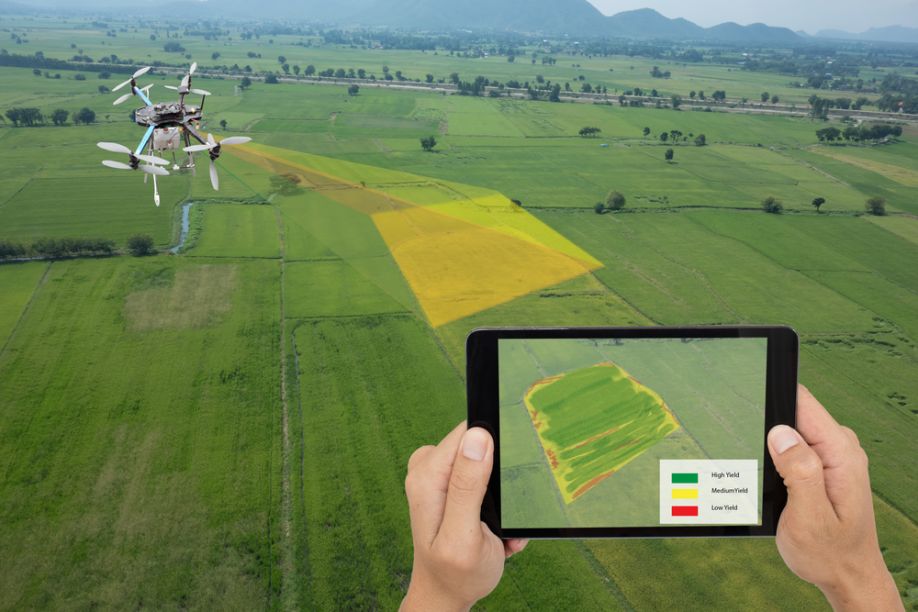Use of AI and Big Data Analytics in AgriTech

'Technology' as a broad concept has consistently had an enormous task to carry out with regards to relieving pressures and creases in age-old frameworks. 'AgriTech' is a more comprehensive and fairly new class inside the 'innovation' range and assists the Agricultural sector.
The Agricultural Industry is one that upholds around 43% of India's work, subsequently, it is one of the main financial areas alongside being our prime source for sustenance. The world has now partaken in the tremendous test of how to increment farming creation to accomplish food security during the 21st century and feed the developing populace.
This should be done while keeping up maintainable horticultural frameworks and at the same time confronting difficulties. For example, an evolving atmosphere, exhaustion of water assets, and the potential for expanded disintegration and loss of profitability because of the onset of extraordinary climate realities. Due to the above inevitabilities, digital agriculture has been on the ascent.
Satellites. unmanned aerial vehicles (UAVs), and remote sensors have been created that monitor farms for 24 hours per day consistently, hence, empowering the farmers to screen their yields in a superior manner and be updated in real-time about the perfect time for harvest.
Settled areas like farming may see monumental increases in proficiency and enhancements from the right information and examination. With the execution of rural AI, farmers can investigate climate conditions, temperature, water usage, and soil conditions gathered from their farms to settle on informed choices for business decisions. E.g., deciding the average yield decisions that year, or which hybrid seeds decrease waste.
A few ways in which Big Data Analytics is Revolutionizing the Agricultural Sector:
1. Monitoring Natural Trends
2. Advanced Supply Tracking
3. Risk Assessment
4. Ideal Crops and Consumer Expectation
5. Data-Driven Industry
6. Better Supply Chain Management
A few ways in which Artificial Intelligence is Revolutionizing the Agricultural Sector:
1. Predictive analytics and precision farming
2. Risk Management
3. Pest Control
A single technology platform can help farmers increase their income and hence their buying and selling capacity as well, along with providing them with various cost analysis assistance, so that the funds can be allocated in the right manner for every task the farmer carries out, or every purchase that is made. Along with this, Farmers are being guided towards forming FPC’s/FPO’s (Farmer Producer Companies / Organisations) which will allow them to carry out the processes of post-processing and production, along with manufacturing and selling of the produce on their own through the FPO’s, adding a profitable value.
AgTech works towards the establishment of a Digital Agricultural supply chain, where dots are connected, making the entire process exceedingly streamlined. Stakeholders are being brought onto this single technological platform. Through the access of technology, farmers can expand their buyer base, reach an exceeding number of consumers, and increase their profitability as well.
In this case, not only do the production processes become more efficient, but even the selling of produce increases to a rising number of profitable sources. Platforms like E-Mandis are also gaining importance as of today and are working towards the creation of a uniform national market for agricultural commodities, in turn, increasing the consumer base for farmers and individual farmers who can then deal (theoretically) directly with the entire country.
These are only a few ways in which technology is integrated with agriculture and can help individual and small farmers along with assisting the entire value chain while benefiting contract farmers, Corporates, R&D institutions, funding agencies, trade bodies, FPO’s and Government bodies as well.
According to an article by The Economist, ‘In the short run, these improvements will boost farmers’ profits, by cutting costs and increasing yields, and should also benefit consumers (meaning everyone who eats food) in the form of lower prices. In the longer run, though, they may help provide the answer to an increasingly urgent question: how can the world be fed in the future without putting an irreparable strain on the Earth’s soils and oceans?’
The way forward for future farming processes and farmers, along with various Agri-related sub-verticals seems to be digital and beneficial not only for various Agriculture stakeholders but majorly for small farmers and labourers, converting them into farm owners as well.
Comments (0)
This post does not have any comments. Be the first to leave a comment below.
Featured Product


